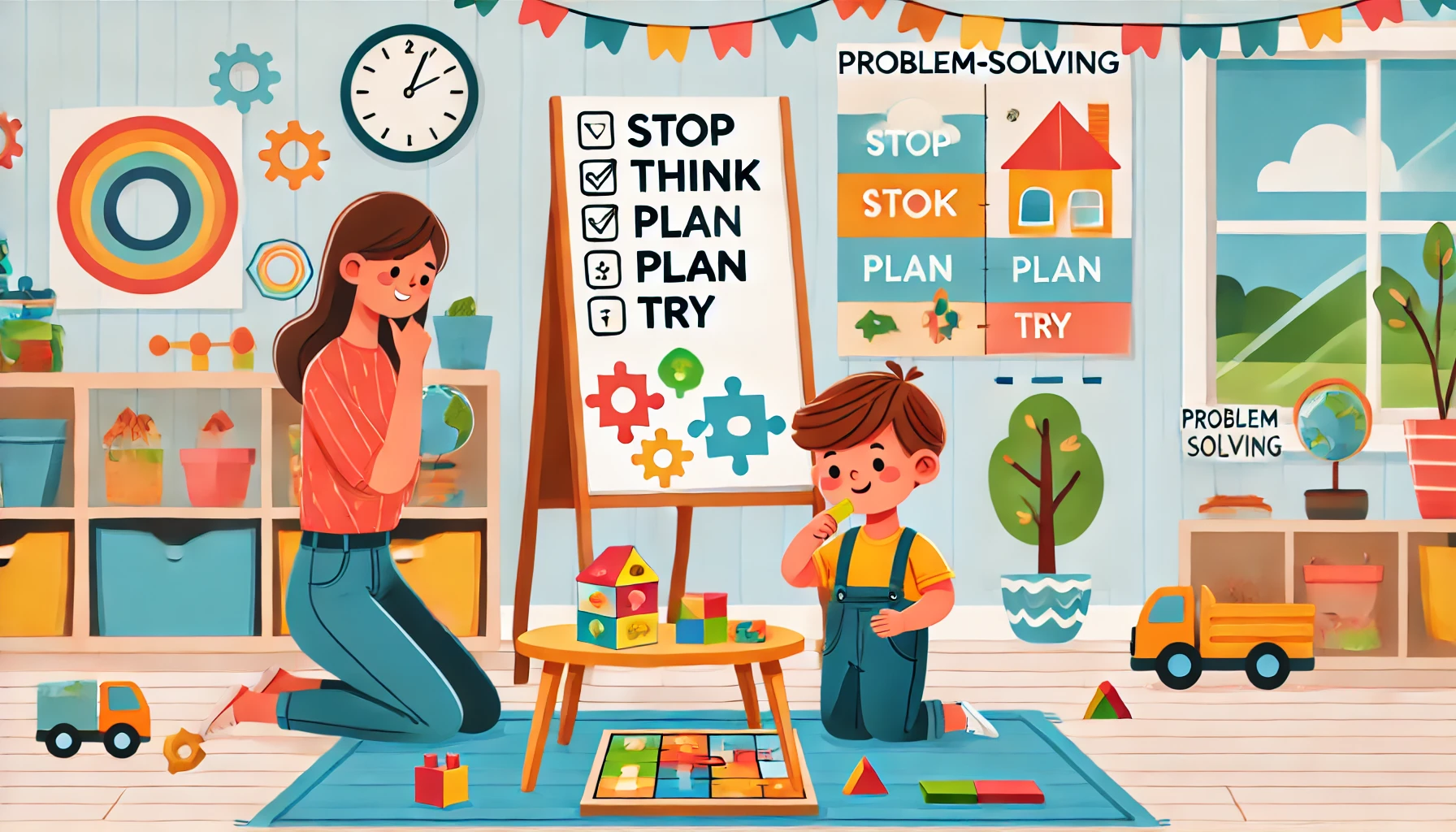How to Teach Young Children About Problem-Solving and Decision-Making
Problem-solving and decision-making are critical life skills that empower children to face challenges with confidence and creativity. Even in early childhood, kids can begin to learn how to think through choices, explore solutions, and understand the outcomes of their decisions. By nurturing these skills early, we help children build independence and resilience.
Why Teaching Problem-Solving Matters
- Encourages independence and critical thinking
- Builds confidence in facing challenges
- Teaches patience and perseverance
- Supports social interactions and conflict resolution
- Fosters emotional resilience and adaptability
1. Explain Problem-Solving in Simple Terms
Make it relatable to their daily life.
Activity Idea:
- Say: “Problem-solving means finding a way to fix something when it’s not working.”
- Use examples: “If we can’t find your toy, we think of where we looked last!”
- Ask: “Can you think of a time you solved a problem?”
What Kids Learn:
- That problems are normal and manageable.
- Simple, clear steps for thinking things through.
- That they are capable problem-solvers.
2. Model Problem-Solving Every Day
Show them how you solve small problems.
Activity Idea:
- Narrate your thinking: “Hmm, the lid is stuck. I’ll try turning it the other way.”
- Show trial and error: “That didn’t work—what else can I try?”
- Involve your child: “What do you think we should do next?”
What Kids Learn:
- Strategies for solving problems calmly.
- Persistence when things get tricky.
- How adults handle challenges.
3. Use Storytelling to Explore Solutions
Stories provide safe, creative examples.
Activity Idea:
- Read books like What Do You Do With a Problem? by Kobi Yamada.
- Pause the story to ask: “What would you do in this situation?”
- Create your own problem-solving story together.
What Kids Learn:
- Multiple ways to approach a challenge.
- Empathy for characters facing problems.
- Creative thinking in action.
4. Practice with Everyday Scenarios
Give children simple problems to solve.
Activity Idea:
- Pose questions: “If the puzzle piece doesn’t fit, what can we try?”
- During play, create mini-challenges: “How can we build a taller tower?”
- Reflect: “What worked? What didn’t? What can we try next time?”
What Kids Learn:
- Hands-on experience with challenges.
- That it’s okay to try more than once.
- How to enjoy the problem-solving process.
5. Teach a Simple Step-by-Step Approach
Break it down into easy steps.
Activity Idea:
- Teach: Stop → Think → Plan → Try.
- Create a visual “problem-solving poster” together.
- Practice using the steps during daily tasks.
What Kids Learn:
- A clear, repeatable process.
- Confidence in approaching challenges.
- Patience in thinking before acting.
6. Encourage Decision-Making
Let children make choices and see outcomes.
Activity Idea:
- Offer small choices: “Do you want the red cup or the blue cup?”
- Discuss decisions after: “You picked the blue cup—why did you choose it?”
- Highlight cause and effect: “Since you picked rain boots, your feet stayed dry!”
What Kids Learn:
- Ownership of their choices.
- How decisions lead to outcomes.
- Confidence in making thoughtful choices.
7. Use Games and Puzzles to Build Skills
Play-based learning is powerful.
Activity Idea:
- Use age-appropriate puzzles or building toys.
- Play games like “I Spy” or “What’s Missing?”
- Celebrate effort: “You worked hard to finish that puzzle!”
What Kids Learn:
- Fun ways to practice thinking flexibly.
- Joy in solving challenges.
- Focus and persistence.
8. Celebrate Problem-Solving Efforts
Reinforce the process, not just the outcome.
Activity Idea:
- Say: “You kept trying different ways—that was smart thinking!”
- Create a “Problem-Solver of the Day” badge.
- Reflect daily: “What problem did you solve today?”
What Kids Learn:
- That effort matters most.
- Positive feelings toward challenges.
- Motivation to keep practicing.
Final Thoughts
Teaching young children problem-solving and decision-making builds skills they will use for a lifetime. Through simple daily conversations, play, and reflection, children learn that they are capable thinkers who can face challenges with curiosity and confidence. Every time they solve a puzzle or make a choice, they grow stronger in their ability to navigate the world.
